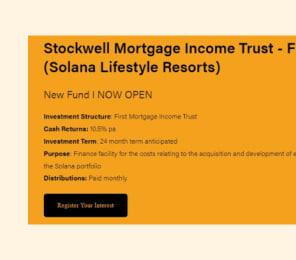Care ‘hubs’, retirement apartments that convert to residential care, Build to Rent – here are the design trends of today that will be tomorrow’s ageing accommodation options.
It takes five to seven years to take a retirement living or residential aged care project from conception to reality – so what will the seniors’ living product of 2030 look like?
Residential aged care out – care hubs in
While several operators continue to successfully build stand-alone residential care – Opal HealthCare is the leader here – very few new developments fit this bill.
 Vertical aged care is also increasingly the only viable option with land at a premium and the population rapidly growing in metropolitan areas.
Vertical aged care is also increasingly the only viable option with land at a premium and the population rapidly growing in metropolitan areas.
So, there are an increasing number of providers moving towards master planned communities with retirement living and a ‘care hub’ – a smaller aged care facility catering to residents with high care needs or progressive dementia and staff who deliver home care services into the wider village.
“The model for seniors living communities is increasingly becoming a mixed-use and open, interactive environment with numerous user-pays services catering to a well-targeted audience,” said Caroline Treacy, Managing Director of Grey Space Architecture.
‘Aged care lite’ – assisted living back in vogue
 More village operators are also increasing their assisted living offering, targeting couples who want to stay together but require different levels of support.
More village operators are also increasing their assisted living offering, targeting couples who want to stay together but require different levels of support.
But some are taking this one step further: designing retirement apartments that meet both village and residential aged care building codes.
These ‘hybrid’ care models can be easily converted to a care bedroom and an ensuite bathroom so residents can receive residential care and ultimately end-of-life care.
“Obviously there are different funding structures and different legislative requirements through the Department of Health and Aged Care or the Retirement Villages Act, but the smarts are embedded in the build to say that you can make this happen and that is a product that is going to start to meet the market,” said Pino Gentile, principal at architecture firm ThomsonAdsett.
The expanding ‘ecosystem’ of seniors’ housing
Several operators are also looking to provide a diverse range of products on their site – including all ages products. These include options for Build to Rent, rental housing, social housing, disability accommodation and more.
These serve a dual purpose of catering to a wider section of the community and bringing in alternative revenue streams or Government funding support.
The challenge here is balancing the demands of a mixed tenure – historically retirement villages that have rented out vacant units to lift occupancy have seen tension between residents and renters.
Adaptive reuse to combat a tight construction market
 With land and labour at a premium, the sector can also expect to see more adaptive reuse of existing buildings than construction of new developments.
With land and labour at a premium, the sector can also expect to see more adaptive reuse of existing buildings than construction of new developments.
With the demand for hospitals, transport and infrastructure for the 2032 Olympic Games and 2026 Commonwealth Games, the number of new projects now outweighs the supply of builders which in turn increases competition and construction costs.
The solution? Convert existing buildings for half the price and less environmental impact. See Australian Unity’s conversion of its former head office into a 15-storey aged care home The Alba in South Melbourne as an example.
“Where you have larger type of developments or existing ones, it’s a matter of having a look at what can be unlocked within the site,” said Jessica Lee, Principal at Fender Katsalidis which designed The Alba. “You can call your architects in to do a feasibility study before you decide if it’s a no-go zone.”
Wellness hubs – for the wider community

With fewer aged care beds and the cost of care increasing, there is also likely be a push by Governments at all levels to reduce pressure on these services and educate people to look after their own health as they age.
Enter the wellness hub – a space that offers older people a space to visit for a health check, visit the library, enjoy a coffee with a friend or take an adult education class.
“It becomes a destination to go and get whatever service you need,” explained Lara Calder, Managing Director of Calder Flower Architecture. “But most of all, it’s for people who are lonely and living alone.”
These won’t necessarily attached to a retirement village or a larger campus – but operators may see the benefits of bringing the wider community into the village. See Arvida’s Christchurch Living Well Centre in New Zealand as an example.
Regulation on regulation
The approvals and regulatory process for building new retirement living and residential care is continuing to become more complex, adding to the red tape and timeline for new developments.
The new National Construction Code introduced earlier this year will now apply to the retirement living sector. The Livable Housing Guidelines – which were first established in 2011 and were previously considered best practice – are also becoming mandatory for Class 2 apartment buildings.
Combined with State and Council guidelines and operators will need to navigate a swathe of requirements to bring their projects to life.
This will see many developments start to look increasingly alike, which takes us to…
Location, location, location
With both residential care and retirement living becoming increasingly standardised in their colours, fit outs and layouts, the service offering beyond residents’ apartment and building will be the key differentiator for operators.
Increased competition means village operators will need to continually invest in their community facilities – that new or recently refurbished clubhouse may be the cherry on top for buyers versus a village that is still under construction.
Community connection as standard
 In residential care, the focus will be on community ties and facilitating interaction with the wider community – the café will become the standard rather than the exception.
In residential care, the focus will be on community ties and facilitating interaction with the wider community – the café will become the standard rather than the exception.
But these community features also need people behind them.
“The architect needs to bring with it the relationship between spaces and making sure that it has enough amenity,” said Shayne Evans, CEO and lead architect at Stanton Dahl. “But the provider needs to make sure that they’re also bringing to it activities and personnel and an opportunity for it to actually be activated.”
Finally: choice and control
Baby Boomers have always enjoyed choice so whether it’s vertical or horizontal, a retirement village or Build to Rent, everyone will have a different idea for where they want to live as they age.
Those that can identify their target market – and develop product to match – will reap the rewards.










